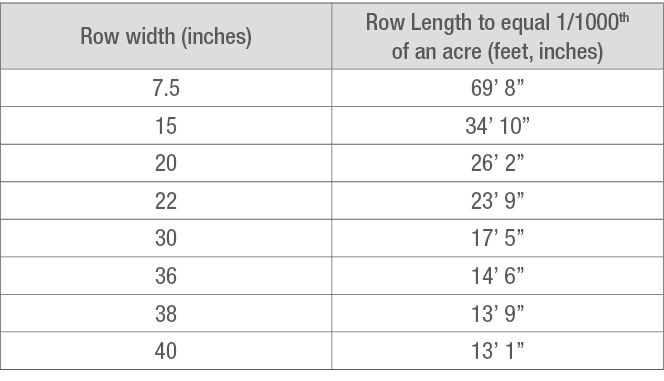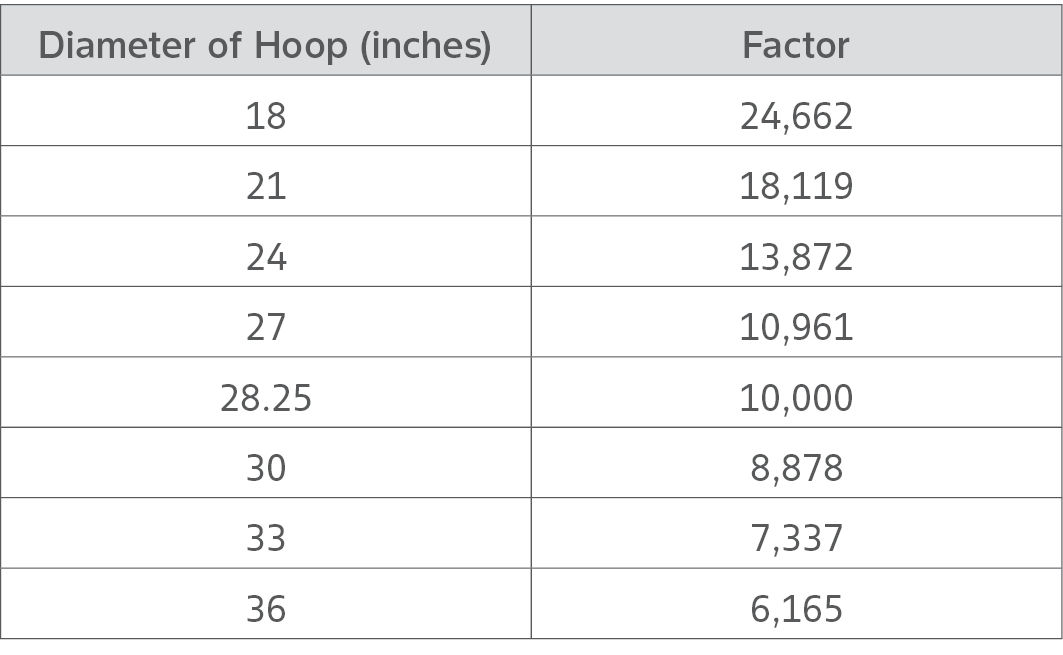5 MIN READ
Assessing Corn and Soybean Stands
January 6, 2024
- Early assessment of corn and soybean stands can help identify potential crop concerns early in the season.
- Once seedlings emerge, stand counts, and visual inspection of the plants can help to identify problems from planting, insects, and/or diseases.
- Three common methods for taking stand counts are the 1/1000th acre method, the wheel method, and the hoop method.
General Suggestions
When evaluating a corn or soybean stand, only count plants that have a good chance of survival. Sample at several locations in the field and obtain an average across the sample locations to get a better assessment of the population. Taking more samples will improve the accuracy of the estimate. Keep in mind the differences in assessing corn and soybean stands. For example, while corn plant populations are a critical component of yield, soybean plants are better able to compensate for low plant populations.
1/1000th Acre Method
Count the number of plants in a length of row equal to 1/1000th of an acre based on row width (Table 1). Multiply the number of plants by 1000 to get plants per acre.
Table 1. Stand count evaluation for 1/1000th acre based on row width and number of plants in a given row length.

Wheel Method
Count 150 plants and measure the distance from the first plant to the last plant with a measuring wheel. Divide the appropriate factor in Table 2 by the number of feet traveled to determine plant population. For example, if you walked 94 feet while counting 150 plants in 30-inch rows, the population is 2,613,600 ÷ 94 = 27,804 plants per acre.
Table 2. Stand count evaluation factors for measuring the distance when counting 150 plants.

Hoop Method
This method should be used for drilled soybeans. Measure the diameter of a hoop, toss it into the field, and count the number of plants inside the hoop. Multiply the average number of plants from the samples taken by the appropriate factor listed in Table 3 to get the number of plants per acre. For example, a hoop with a diameter of 28 ¼ inches can be multiplied by 10,000 to obtain the number of plants per acre. This size of hoop can be made by cutting a tube to 88 ¾ inches and joining it to form a circle.
Table 3. Stand count evaluation factors, by hoop diameter, for determining soybean plant populations using the hoop method.

Try to Determine the Cause of a Poor Stand
There are many things that can result in a poor stand. Consider the entire field when assessing the stand.
- Look for patterns over time. Was the same row always worse? Was the stand reduced for the rows that were planted over the windrow from the combine that harvested the previous crop? Were there differences across the field in compaction, herbicide application, fertilizer placement, or other factors?
- Weather conditions can influence the stand between planting and emergence. Was it too cold, too wet, or too dry after planting?
- Insects (e.g., wireworm, white grub, black cutworm) or other pests such as millipedes and slugs can reduce the quality of a stand. So can seedling diseases, such as phytophthora and pythium.
- Check the planting depth of the corn to determine if it was planted too deep or too shallow, both of which can affect emergence. Finally, look for any other planter-related issues that may have caused stand losses.
Is a Replant Needed?
Several factors should be considered when assessing a corn or soybean stand for potential replanting, including if the field is irrigated or dryland, the current plant population, plant spacing, and the potential date any replanting. See Corn Replant Decisions for more information on replanting corn, and Soybean Replant Decisions for soybean.
Sources
Gerber, K. 2021. 2023 corn & soybean field guide. Purdue University.
Roth, R. (Ed.) 2023. Georgia Corn Production Guide. University of Georgia Extension. https://grains.caes.uga.edu/content/dam/caes-subsite/grains/docs/corn/2023-Corn-Production-Guide.pdf
Wiebold, W. and Massey, R. 2022, revised. Corn and soybean replant decisions. University of Missouri Extension. https://extension.missouri.edu/publications/g4091
1114_96568